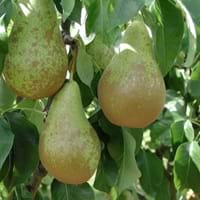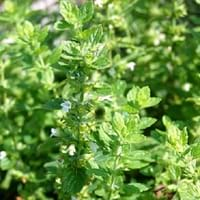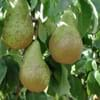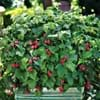Life Span
Perennial
Perennial
Origin
Europe, Western Asia
Southern Europe
Types
Not Available
Not available
Number of Varieties
Not Available
Habitat
Dappled Shade, Sunny Edge, Woodland Garden Secondary
Dappled Shade, Mediterranean region, Shady Edge, Woodland Garden
USDA Hardiness Zone
5-9
4-9
Sunset Zone
2a, 2b, 3a, 3b, 4, 5, 6, 7, 8, 9, 14, 15, 16, 17, 18
1a, 1b, 2a, 2b, 3a, 3b, 4, 5, 6, 7, 8, 9, 10, 11, 12, 13, 14, 15, 16, 17, 18, 19, 20, 21, 22, 23, 24
Habit
Oval or Rounded
Clump-Forming
Flower Color
White
White, Light Pink
Flower Color Modifier
Bicolor
Bicolor
Fruit Color
Yellow, Red, Yellow green
Brown
Leaf Color in Spring
Dark Green
Green, Light Green
Leaf Color in Summer
Dark Green
Green, Light Green
Leaf Color in Fall
Purple, Dark Green, Burgundy
Green, Light Green
Leaf Color in Winter
Light Green
Light Green
Leaf Shape
Elliptic
Ovate
Plant Season
Spring, Summer, Fall
Spring, Summer, Fall
Sunlight
Full Sun
Full Sun, Partial Sun
Type of Soil
Clay, Loam, Sand
Loam, Sand
The pH of Soil
Neutral
Neutral
Soil Drainage
Well drained
Well drained
Bloom Time
Spring
Late Spring, Early Summer, Summer
Tolerances
Drought
Deer resistant, Drought
Where to Plant?
Container, Ground
Ground, Pot
How to Plant?
Seedlings
Cuttings, Seedlings
Plant Maintenance
Medium
Low
Watering Requirements
Average Water Needs
Medium
In Summer
Lots of watering
Lots of watering
In Spring
Moderate
Moderate
In Winter
Average Water
Average Water
Soil Type
Clay, Loam, Sand
Loam, Sand
Soil Drainage Capacity
Well drained
Well drained
Sun Exposure
Full Sun
Full Sun, Partial Sun
Pruning
Remove damaged leaves, Remove dead branches, Remove dead leaves
Remove damaged leaves, Remove dead branches, Remove dead flowers, Remove dead leaves
Fertilizers
All-Purpose Liquid Fertilizer
Nitrogen, Potassium
Pests and Diseases
Bacterial Diseases, Black rot, Fungal Diseases
Gray leaf blight, Gray mold, Leaf spot, Powdery mildew
Plant Tolerance
Drought
Deer resistant, Drought
Flowers
Showy
Insignificant
Flower Petal Number
Single
Single
Fragrant Bark/Stem
No
Yes
Foliage Texture
Medium
Medium
Foliage Sheen
Glossy
Matte
Attracts
Birds, Butterflies
Bees
Allergy
Mouth itching, Throat itching
Avoid during Pregnancy, Skin irritation
Aesthetic Uses
Showy Purposes
Beautification, Cottage Garden
Beauty Benefits
Not Available
Good for skin, Skin Problems
Edible Uses
Yes
Insignificant
Environmental Uses
Air purification
Deer resistant, Insect Repellent
Medicinal Uses
Astringent, Febrifuge, Sedative
Antiemetic, Anxiety, Appetite enhancer, Digestion problems, Insomnia, Sedative
Part of Plant Used
Fruits
Flowers, Leaves
Other Uses
Used As Food
Can be made into a herbal tea, Medicinal oil, Used as insect repellent, Used for its medicinal properties, Used in herbal medicines
Used As Indoor Plant
No
Yes
Used As Outdoor Plant
Yes
Yes
Garden Design
Edible, Fruit / Fruit Tree, Topiary / Bonsai / Espalier
Container, Edible, Herb / Vegetable
Botanical Name
Pyrus Communis
MELISSA officinalis
Common Name
Dessert Pear, Forelle Pear, Forellenbirne, Pear
Lemonbalm, balm, common balm, balm mint
In Hindi
Forelle Pear
नींबू बाम
In German
Forelle Pear
Lemonbalm
In French
Forelle Pear
mélisse
In Spanish
Forelle Pear
Lemonbalm
In Greek
Forelle Pear
Lemonbalm
In Portuguese
Forelle Pear
Lemonbalm
In Polish
Forelle Pear
Lemonbalm
In Latin
Forelle Pear
CITRAGO
Phylum
Magnoliophyta
Magnoliophyta
Class
Magnoliopsida
Magnoliopsida
Family
Rosaceae
Lamiaceae
Clade
Angiosperms, Eudicots, Rosids
Angiosperms, Asterids, Eudicots
Tribe
Not Available
Not Available
Subfamily
Not Available
Nepetoideae
Importance of Forelle Pear and Lemonbalm
Want to have the most appropriate plant for your garden? You might want to know the importance of Forelle Pear and Lemonbalm. Basically, these two plants vary in many aspects. Compare Forelle Pear and Lemonbalm as they differ in many characteristics such as their life, care, benefits, facts, etc. Every gardener must at least have the slightest clue about the plants he wants to plant in his garden. Compare their benefits, which differ in many ways like facts and uses. The medicinal use of Forelle Pear is Astringent, Febrifuge and Sedative whereas of Lemonbalm is Antiemetic, Anxiety, Appetite enhancer, Digestion problems, Insomnia and Sedative. Forelle Pear has beauty benefits as follows: Not Available while Lemonbalm has beauty benefits as follows: Not Available.
Compare Facts of Forelle Pear vs Lemonbalm
How to choose the best garden plant for your garden depending upon its facts? Here garden plant comparison will help you to solve this query. Compare the facts of Forelle Pear vs Lemonbalm and know which one to choose. As garden plants have benefits and other uses, allergy is also a major drawback of plants for some people. Allergic reactions of Forelle Pear are Mouth itching and Throat itching whereas of Lemonbalm have Avoid during Pregnancy and Skin irritation respectively. Having a fruit bearing plant in your garden can be a plus point of your garden. Forelle Pear has showy fruits and Lemonbalm has no showy fruits. Also Forelle Pear is not flowering and Lemonbalm is not flowering . You can compare Forelle Pear and Lemonbalm facts and facts of other plants too.





